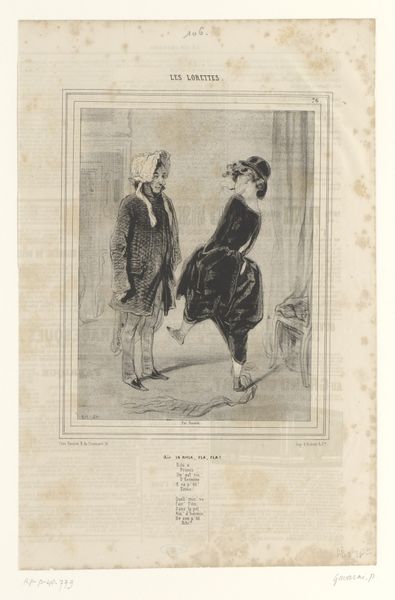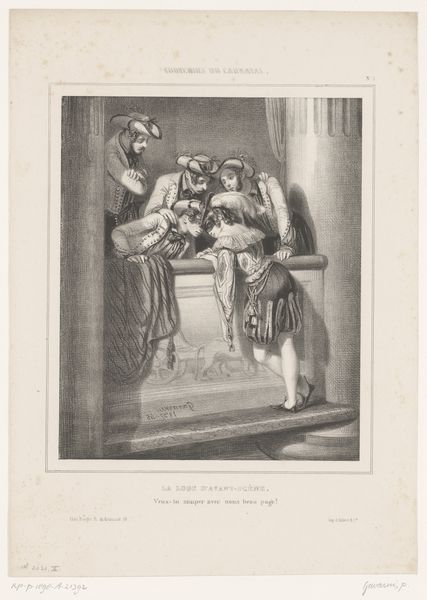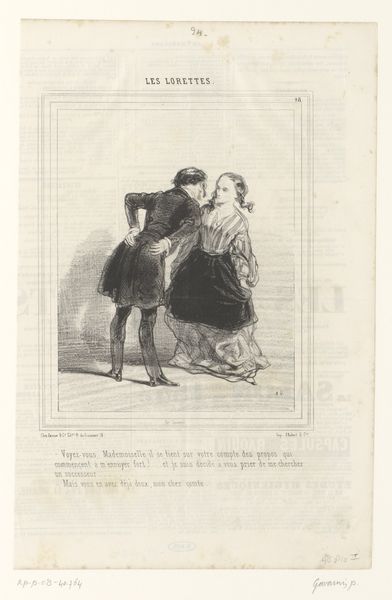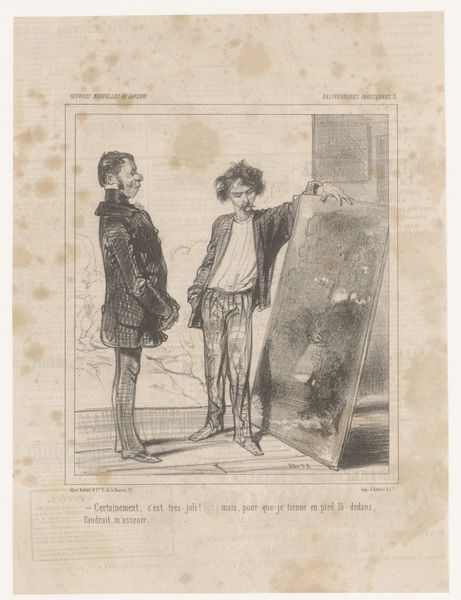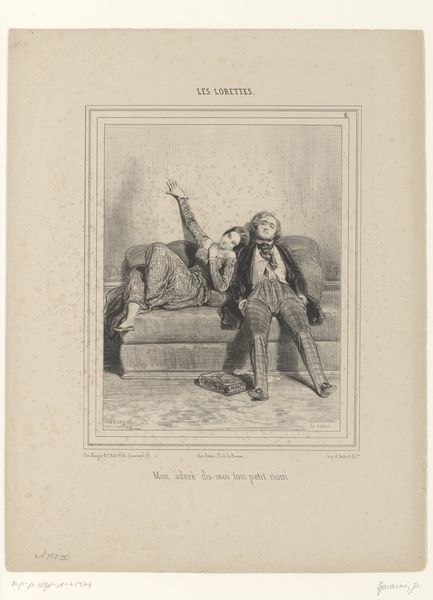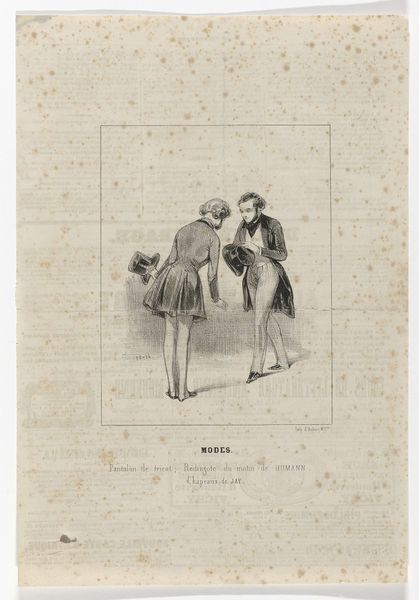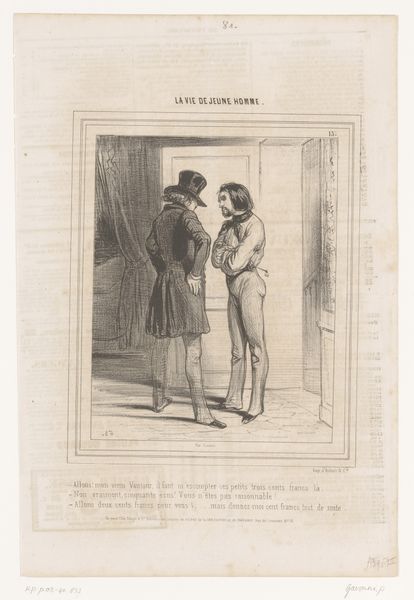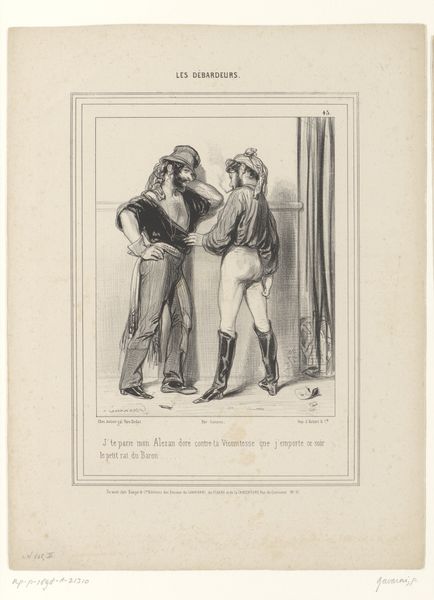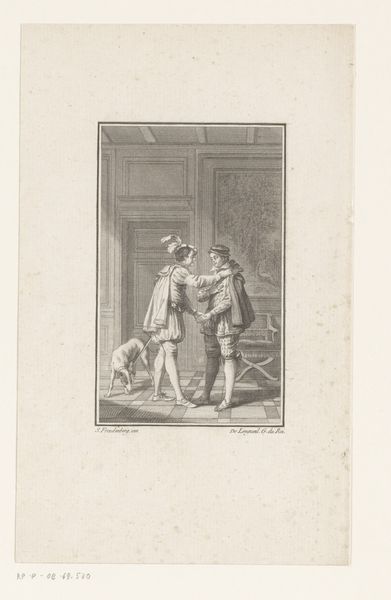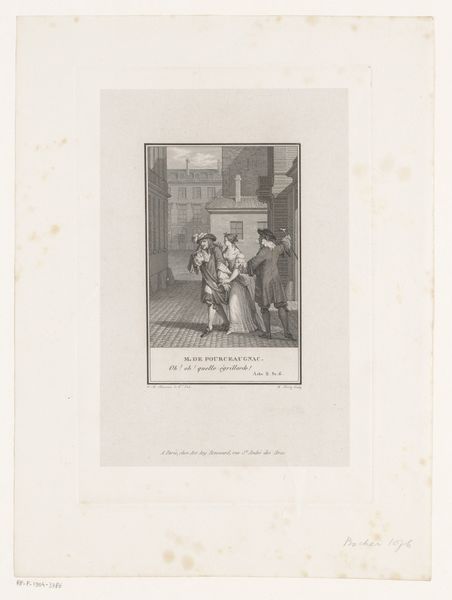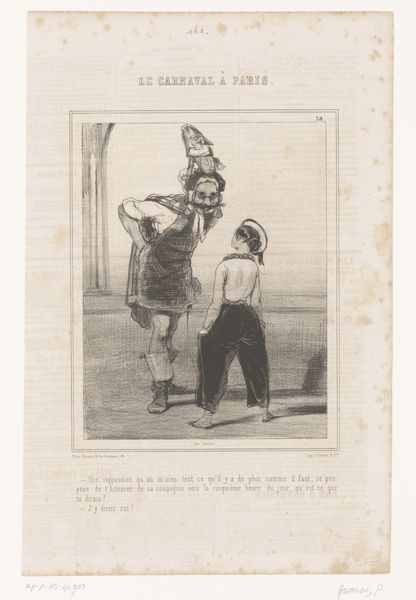
#
pencil drawn
#
light pencil work
#
pencil sketch
#
old engraving style
#
personal sketchbook
#
pencil drawing
#
ink colored
#
sketchbook drawing
#
pencil work
#
watercolour illustration
#
street
Dimensions: height 317 mm, width 230 mm
Copyright: Rijks Museum: Open Domain
Curator: Paul Gavarni created "Man op straat bedreigd door een dief," or "Man on the Street Threatened by a Thief" in 1846. It's currently held in the Rijksmuseum collection. What is your first impression of this work? Editor: A sense of immediate unease strikes me. The harsh lines and shadowed figures hint at societal anxieties and the ever-present threat lurking in urban spaces. Curator: The work employs a delicate pencil, almost like a light pencil sketch. It depicts two male figures; the implied narrative suggests a dynamic of power and vulnerability, articulated formally through gesture and stance. We see a large figure seemingly demanding something from the second smaller figure who appears slightly worried. Editor: Absolutely. The composition is brilliant in the way it stages the scene. I am interested in how Gavarni addresses themes of class and social disparity through the figures and body language. It speaks to the vulnerability of ordinary individuals to exploitation, echoing through history. Curator: It's an interesting interpretation to consider this in terms of the personal sketchbook with watercolor illustration, where each element contributes to the composition's delicate tension. Gavarni captures movement. You can tell there is movement by his artistic direction; consider the lines that create shading around the larger figure. Editor: I agree there is skillful use of line. I still want to stress the setting. It looks like a back street. Considering Gavarni's engagement with depicting Parisian life, it underscores a critique of the period’s socioeconomic realities, providing insight into everyday struggles. I believe the scale, placing the smaller figure further, establishes him as even more marginalized. Curator: One could analyze this purely based on form and aesthetic, without ascribing a political narrative. The beauty of art lies, after all, in its inherent structures. I recognize what you're saying, however. Editor: Well, and I think that dismissing those narratives ignores the very real historical conditions that shaped not only the artwork itself but also the experiences of its viewers across different social locations. To consider only line and shadow neglects to analyze these depictions of people. I do wonder if he meant the thief was taking the "poche au monde." Maybe all that he had to live on. Curator: It’s a sketch offering much to contemplate – in terms of its formal elements and, evidently, its broader cultural resonances. Thank you for sharing your views. Editor: And thank you for focusing on the more artistic elements; it enriches our experience with a broader picture.
Comments
No comments
Be the first to comment and join the conversation on the ultimate creative platform.
